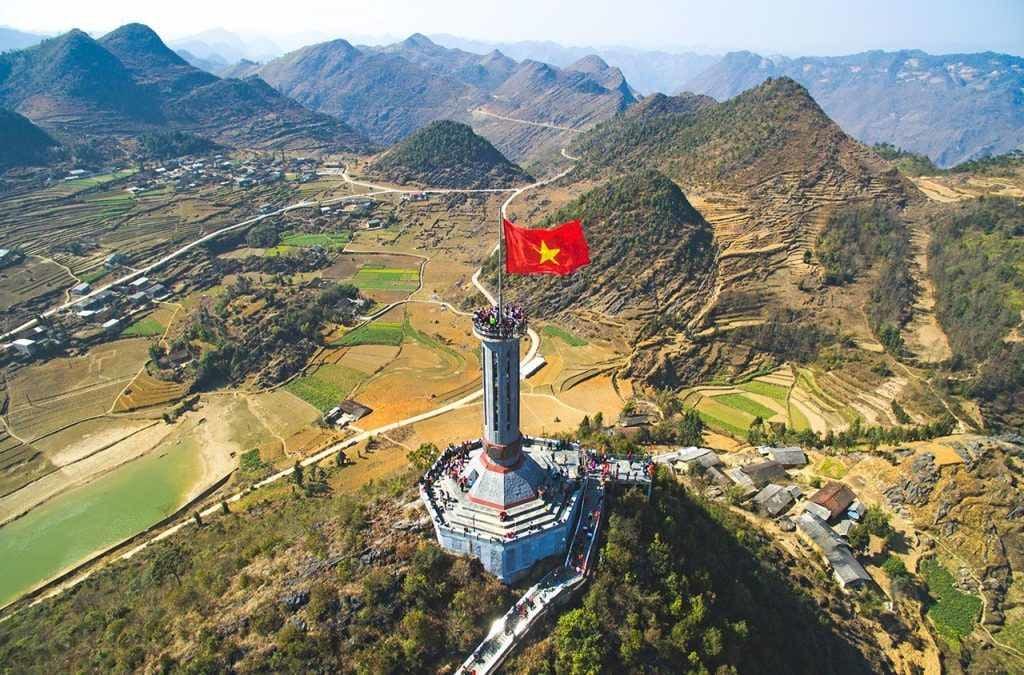Located in Lung Cu Commune – the north pole of Viet Nam, belonging to Dong Van District, Ha Giang Province, about 160km to the north-east of Ha Giang City, Lung Cu Flag Tower is built in the peak of Rong (Dragon) Mountain at an altitude of nearly 1,700m. This is the landmark with important historical significance, marking Viet Nam’s territorial sovereignty.
According to the historical records, Lung Cu Flag Tower was made of more than 10m high Cunninghamia tree under Ly Dynasty in the 10th century. In 1887, the flag tower was rebuilt and expanded in scale and size. Through many times of construction and restoration, now Lung Cu Flag Tower is 33.15m in height, 3.8m in diameter.

The octagonal-shaped tower body is decorated by relieves imitating patterns in Dong Son bronze drum and describing the historical periods of Viet Nam as well as cultural customs of ethnic minority people living in Ha Giang Province. Plugging in the flagstaff is a Vietnamese national flag with an area of 54m², representing for 54 ethnic groups of Viet Nam. At the foot of the flag tower, there is a commemorative house, where displays work tools, costumes and cultural products of the ethnic groups in Ha Giang Province.
To reach Lung Cu Flag Tower, from car park in the halfway of Rong Mountain, visitors must conquer 389 stone steps. Continuing climbing 140 spiral stairs inside the flag tower, visitors will arrive in the peak of the flag tower. From here, visitors can admire the spectacular natural scenery of Dong Van Karst Plateau, terraced rice fields and ethnic villages. Looking down at the foot of Rong Mountain is two lakes called Dragon’s Eye and located symmetrically on the two sides of the mountain.
Apart from Lung Cu Flag Tower, visitors can also explore many other famous tourist sites in Ha Giang Province such as Quan Ba Heaven Gate – the first gate leading to Dong Van Karst Plateau; Lung Cam Culture Village with buckwheat flower fields, Vuong Family’s Residence; Dong Van Market, where converges the cultural quintessences of ethnic groups in the karst pleateau; craggy Ma Pi Leng Pass and winding Nho Que River at the foot of the pass, etc.
